The Philippines’ next batch of locally developed cube satellites (CubeSats) Maya-5 and Maya-6 were successfully launched to the International Space Station (ISS) on 05 June 2023 at around 11:47 PM PST. Maya-5 and Maya-6 are aboard the SpaceX Falcon 9 as part of SpaceX’s 28th commercial resupply mission. The CubeSats, weighing approximately 1.15 kilograms each, will move along an orbit similar to the space station’s at an altitude of approximately 400 kilometers once they are released to space.
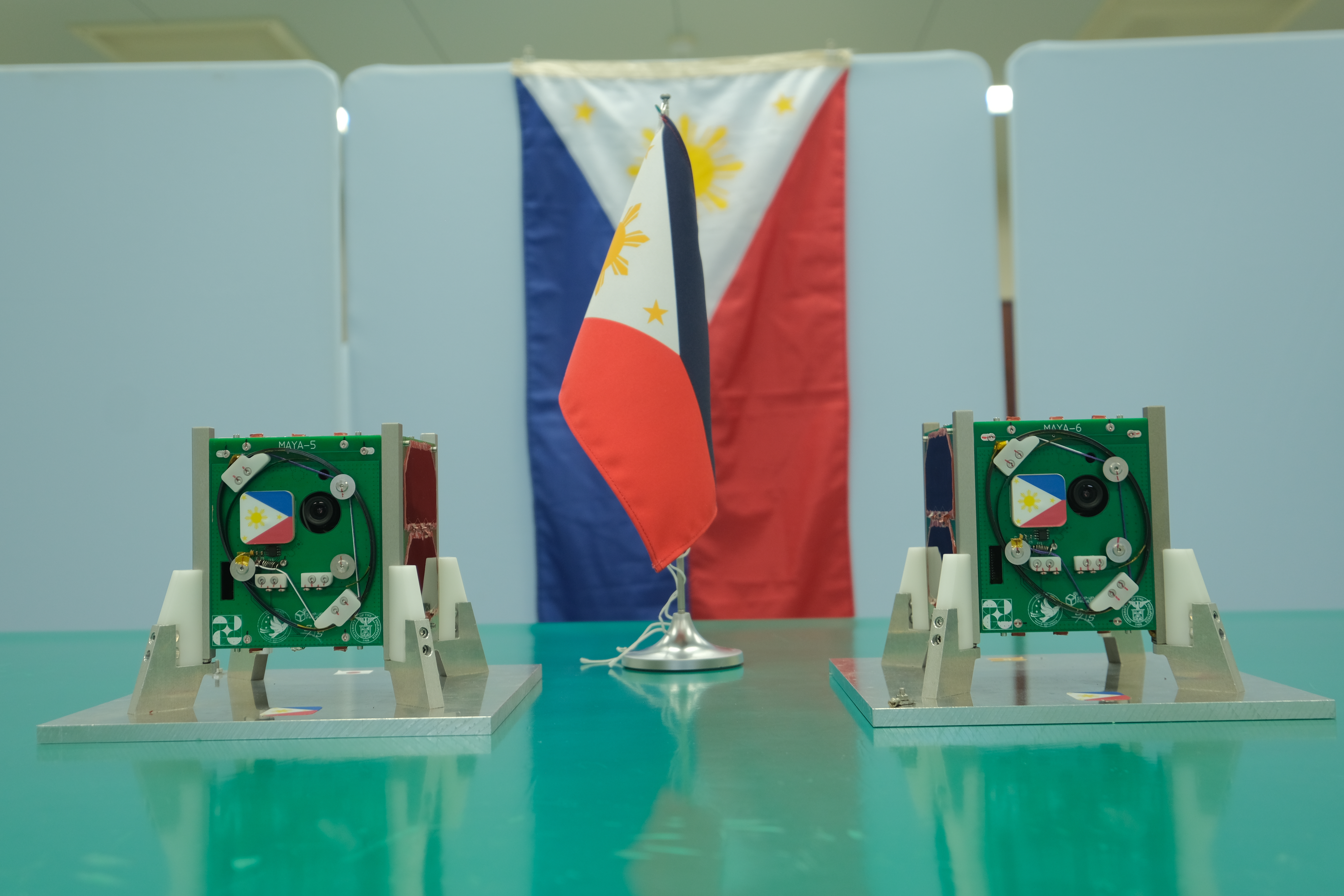
Maya-5 & Maya-6 (courtesy of STAMINA4Space)
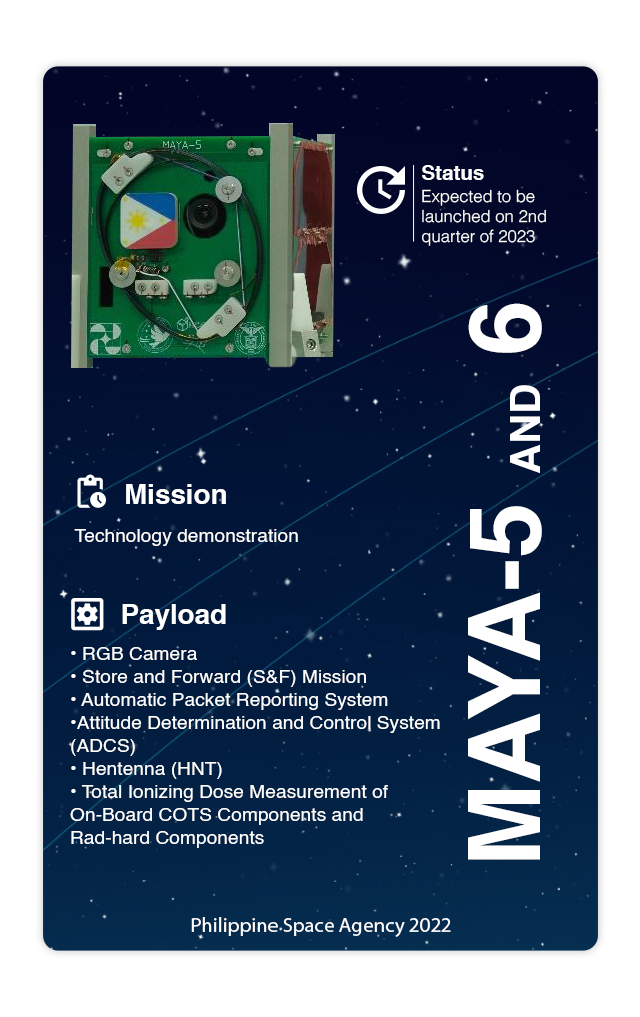
Maya-5 and Maya-6 Infographic
Photo courtesy of the Philippine Space Agency
The Maya-5 and Maya-6 CubeSats were built under the Space Science and Technology Proliferation through University Partnerships (STeP-UP) project of the STAMINA4Space Program, which is funded by the Department of Science and Technology (DOST) and is implemented by the University of the Philippines Diliman (UPD) and the DOST Advanced Science and Technology Institute (DOST-ASTI). The nanosatellite track under the Master of Science (MS) or Master of Engineering (MEng) program of the Electrical and Electronics Engineering Institute (EEEI) of UPD is also implemented in collaboration with the Kyushu Institute of Technology (Kyutech) in Japan and with scholarship support from DOST-Science Education Institute (DOST-SEI).
Maya-5 and Maya-6 are the second set of Philippine university-built CubeSats and, similar to its predecessors, provide local opportunities to acquire space technology know-how and hands-on experience in satellite development. It is also geared towards increased utilization of domestic capabilities by transitioning to locally available components, fabricated boards, and manufactured structural frames.
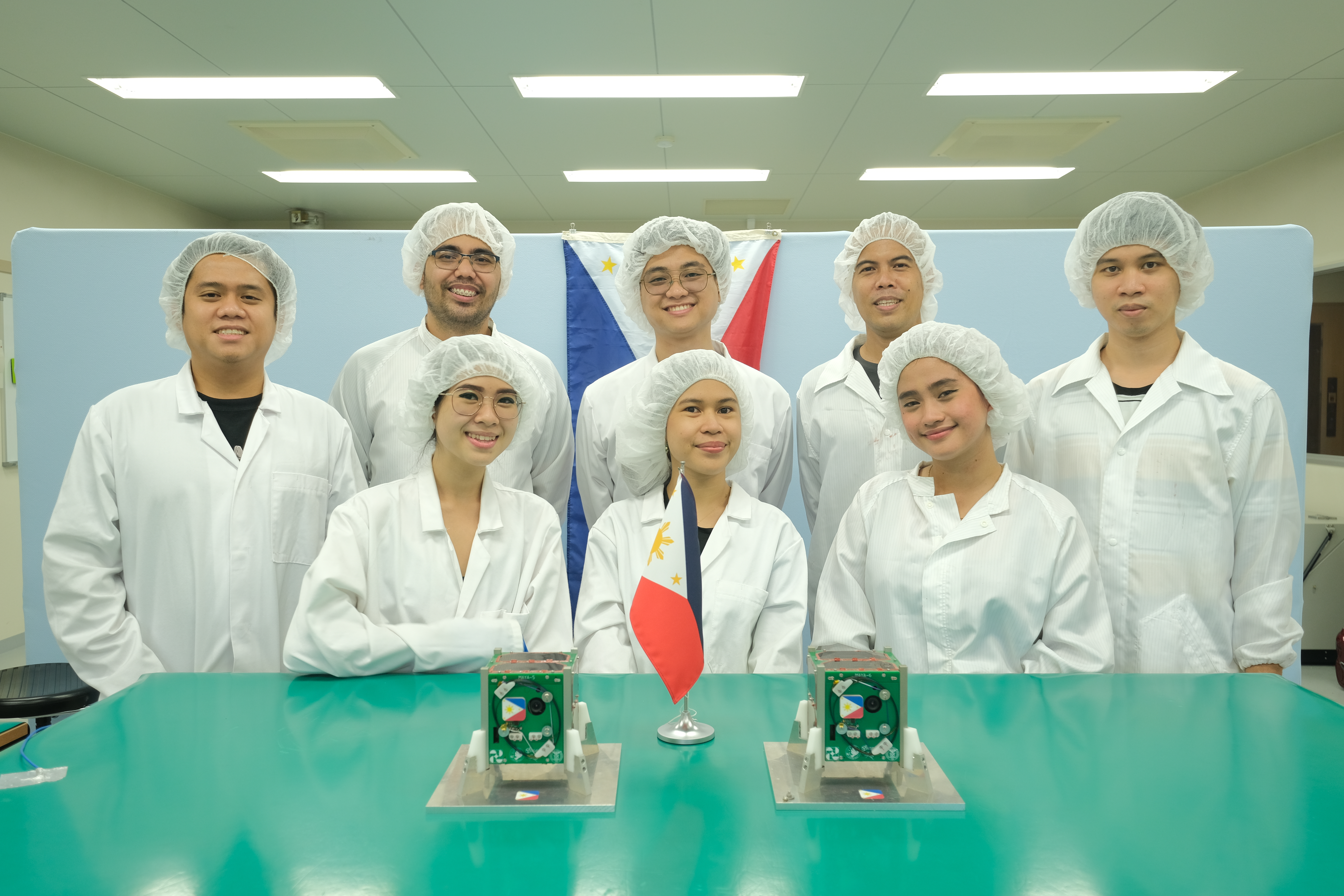
Batch 2 of STeP-UP scholars with the Maya-5 and Maya-6 Flight Models. Top (L-R): Ronald Collamar, Chandler Timm Doloriel, Joseph Jonathan Co, Genesis Remocaldo, Gio Asher Tagabi Bottom (L-R): Angela Clarisse Chua, Anna Ruth Alvarez, Khazmir Camille Valerie Macaraeg Photo courtesy of the STeP-UP/STAMINA4Space
The development of the CubeSats is part of the course requirements of the UP EEEI’s nanosatellite engineering track. The second batch of STeP-UP scholars are composed of eight (8) students who received scholarship support from DOST-SEI. They are Anna Ruth Alvarez, Joseph Jonathan Co, Ronald Collamar, Angela Clarisse Chua, Chandler Timm Doloriel, Khazmir Camille Valerie Macaraeg, Genesis Remocaldo, and Gio Asher Tagabi.
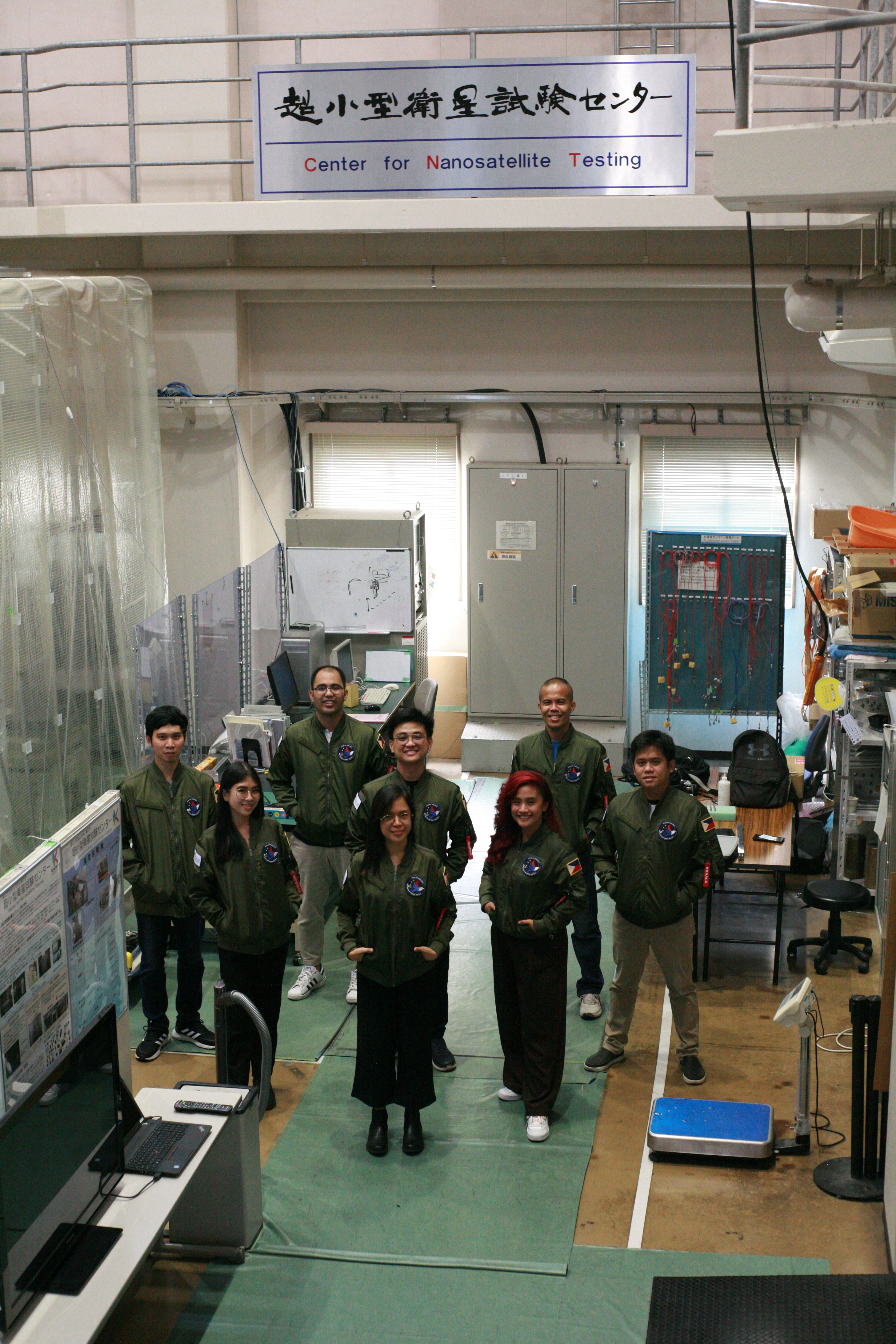
Batch 2 STeP-UP Scholars in Japan (courtesy of STAMINA4Space)
How are Maya-5 and Maya-6 different from or similar to its predecessors?
The Maya-5 and Maya-6 CubeSats are a technology demonstration and educational platform developed for remote data collection through Store-and-Forward (S&F) Mechanism, similar to its predecessor from Kyutech’s 4th Joint Global Multi-Nation Birds Satellite (BIRDS-4) Project, Maya-2, which was decommissioned on 5 July 2022. The Cubesats share the same bus but differ in mission payload. Maya-5 has the same mission payload as that of Maya-2, and Maya-6 has the experimental on-board computer (OBC-EX) mission payload, which controls the attitude determination and control system (ADCS) and hentenna (HNT) missions.
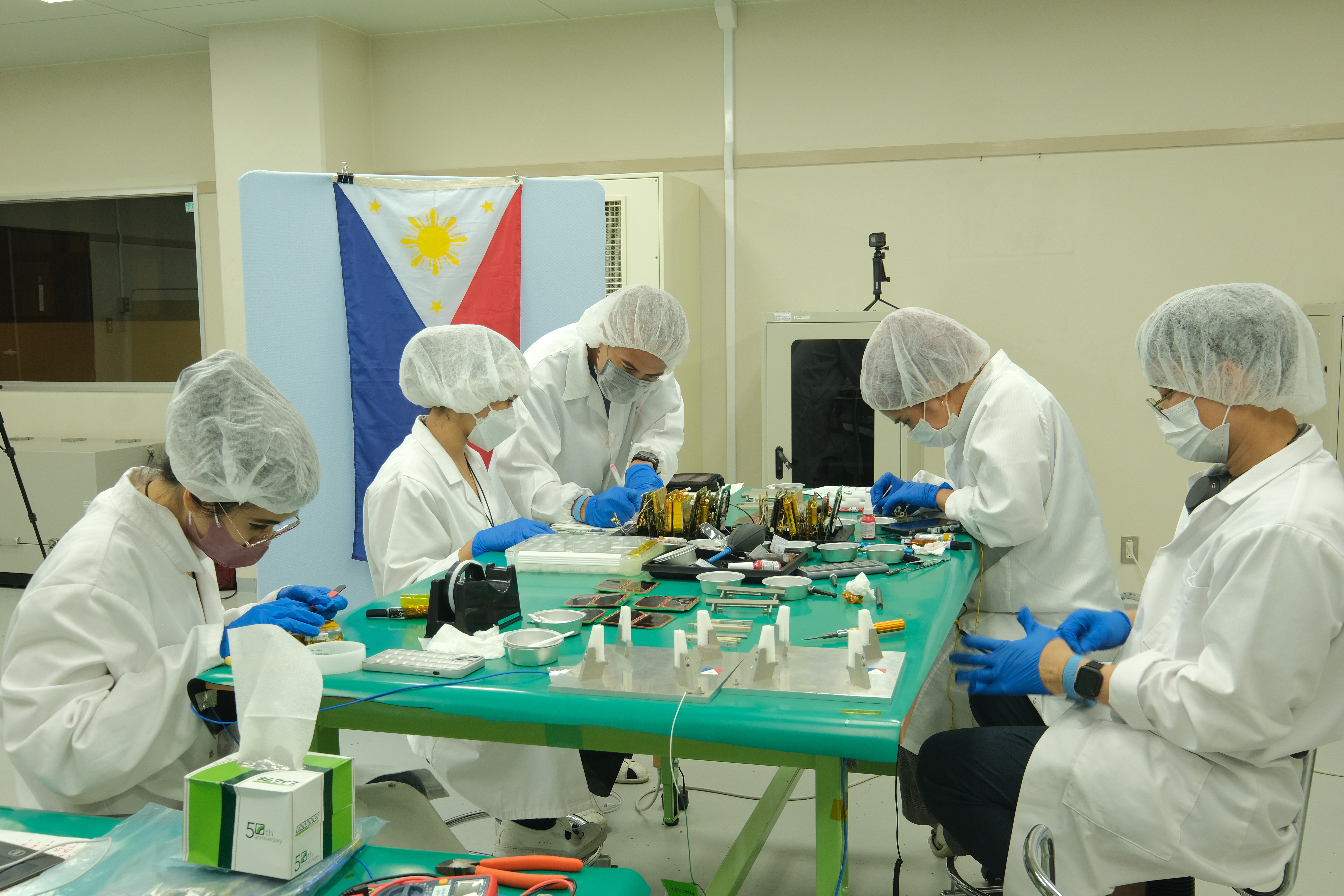
STeP-UP Batch 2 scholars during the final assembly of the CubeSats
Photo courtesy of the STeP-UP/STAMINA4Space
This milestone is the 6th successful launch to space of satellites that are made through the collaboration of the Philippines and Japan — including Diwata-1 and Diwata-2. The CubeSats are another addition to the roster of nanosatellites developed and sent to space by our country. Here are the CubeSats’ predecessors with their respective launch and mission end date:
- Maya-1: Launched June 29, 2018; Ended Mission November 23, 2020
- Maya-2: Launched February 21, 2021; Ended Mission July 5, 2022
- Maya-3 and Maya-4: Launched August 29, 2021; Ended Mission August 4, 2022
STAMINA4Space Program Leader Dr. Maricor Soriano also shared the importance of sustainability in terms of space science and technology development. “Building our own CubeSats and innovating together with local companies should pave the way for a space tech industry base. It is up to all three entities, government, academe and industry, to collectively sustain this,” she said.
STeP-UP Project Leader Engr. Paul Jason Co also added that “Such a milestone would not have been possible without the continued support from DOST and DOST-SEI, whose commitment to furthering our country’s SSTA capability has accelerated our country’s homegrown space scientists and engineers”.
DOST-ASTI Director Dr. Franz De Leon also reiterated that “with the experience and knowledge that our scholars, scientists, and researchers have gained, we will develop new power generation, which will bring in many more space technological breakthroughs not only to the country, but soon to the world.”
What’s next?
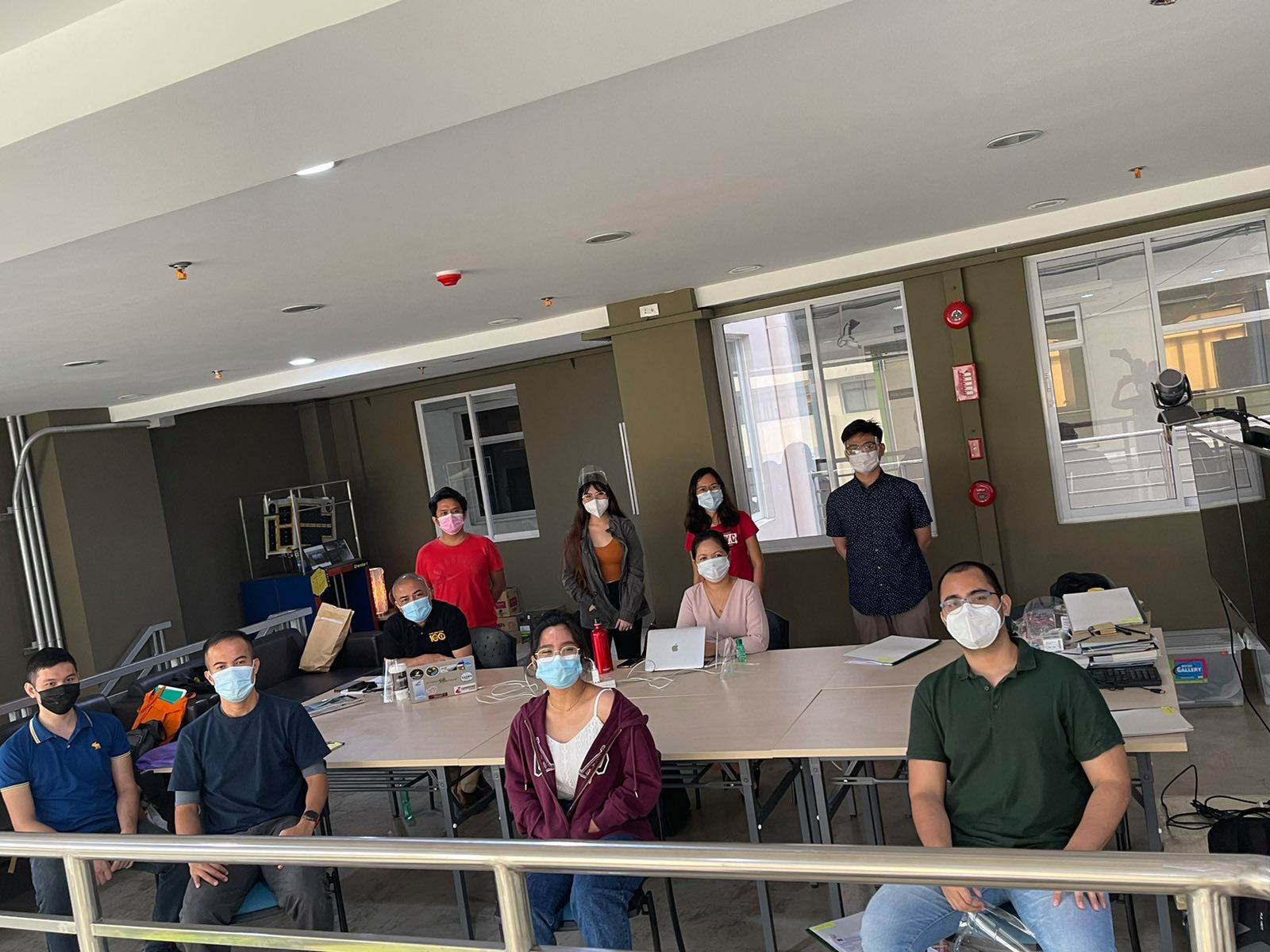
STeP-UP Batch 2 scholars courtesy call with PhilSA Director General Joel Joseph Marciano Jr.
Photo courtesy of the STeP-UP/STAMINA4Space
“This milestone marks the second time that our country has sent CubeSats that were locally developed into space. This shows beyond doubt that our country’s efforts to have a place in space is not a one and done deal,” Engr. Co added.
Once Maya-5 and Maya-6 are deployed, they will be operated through Philippine Universities Ground Archiving and Data Reception (PUGAD) station in UPD.
“UPD and EEEI will continue furthering our local SSTA capabilities. We also recognize the hard work that the scholars have put in despite challenges during the pandemic. We are optimistic that your efforts will spur and encourage others to take the same path,” said Engr. Co as he discussed the future plans of the University.
Dr. De Leon brought up the value of inclusivity in terms of SSTA. “To fully realize the benefits of space technology, it is essential to equip our researchers and scientists on how to process and utilize these satellite assets effectively. DOST has always advocated for inclusive science, technology, and innovations or STI driven by the needs of the communities — and we will continue to do so by supporting projects, services, activities, and endeavors using emerging technologies for space science technology and innovation,” he said.
“We have always believed in the excellence of our scholars and we are very happy to see them accomplish great things and contribute in building the country’s capability in satellite development and in space technology in general especially our second batch of STeP-UP scholars,” Dr. Josette Biyo, DOST-SEI Director, shared. “We continue to strive to pave the way for more talented young people to pursue STEM and assure that space science and engineering will always be a priority in the scholarship program,” she added.
“As I follow the SpaceX Falcon 9 rocket launch today, I am filled with excitement and pride as a Filipino knowing that Maya-5 and Maya-6 CubeSats are among its precious cargo, and that with those small satellites, our country continues to fare in space for science and innovation. Congratulations to the student-scholars – Anna, Angela, Gio, JJ, Jimbo, Ronald, Timm, and Valerie – who built Maya-5 and 6, and to their mentors from UP Diliman, DOST-ASTI and PhilSA – I thank you for your hard work and dedication,” Philippine Space Agency (PhilSA) Director General Dr. Joel Joseph Marciano Jr., shared after the successful launch.
The next nanosatellite, Maya-7, is a 2U CubeSat currently being developed through PhilSA’s Advancing Core Competencies and Expertise in Space Studies Nanosat Project (ACCESS Nanosat). ACCESS Nanosat kicked off in September 2022 and provides the opportunity for Filipinos to pursue a master’s degree with specialized courses in satellite engineering at the EEEI. In this project, a team of select students and researchers are in the process of designing and developing the Maya-7 CubeSat.
The ACCESS Nanosat team is also in close collaboration with the winners of the Nanosat Mission Idea Contest (NMIC), who are developing their proposed mission payloads that will be subsequently integrated into Maya-7.
As a final message, Dr. Marciano said, “I salute the STAMINA4Space Program and, in particular, the STeP-UP Project, for yet another milestone in Philippine space. We acknowledge and thank the DOST for supporting the program. PhilSA strives to build forward on your accomplishments.”
Details about Maya-5 and Maya-6’s deployment from the ISS will be released in the coming weeks.
***
The Space Technology Applications Mastery, Innovation, and Advancement (STAMINA4Space) Program is funded by the Department of Science and Technology (DOST), monitored by DOST’s Philippine Council for Innovation, Energy, and Emerging Technology Research and Development (DOST-PCIEERD), and implemented by DOST’s Advanced Science and Technology Institute (DOST-ASTI), and the University of the Philippines Diliman (UPD). It further aims to develop deep expertise that enables and sustains the growth of a local scientific-industrial base in space technology and applications in the Philippines.
- Email: info@stamina4space.upd.edu.ph
- Website: stamina4space.upd.edu.ph
- Facebook: Facebook.com/STAMINA4Space
- Instagram: Instagram.com/@stamina4space
***
The Philippine Space Agency (PhilSA) is the central government agency addressing all national issues and activities related to space S&T applications. Created under Republic Act No. 11363 or the Philippine Space Act, the PhilSA is an attached agency of the Office of the President for purposes of policy and program coordination, and to ensure alignment in national policies and priorities.
- Email: info@philsa.gov.ph
- Website: philsa.gov.ph
- Facebook: facebook.com/PhilSpaceAgency
- Instagram: @philspaceagency
***




